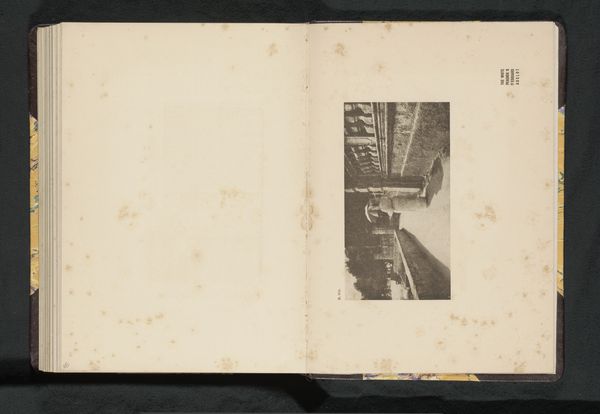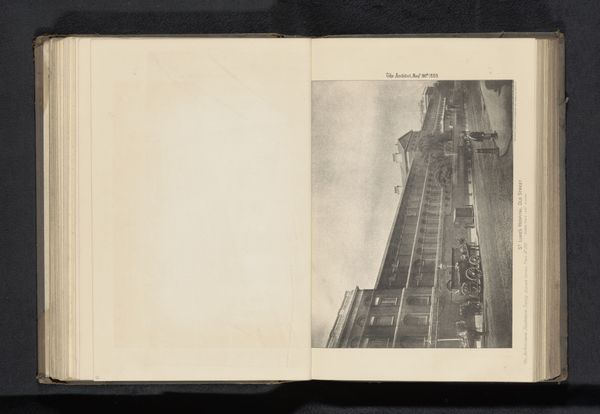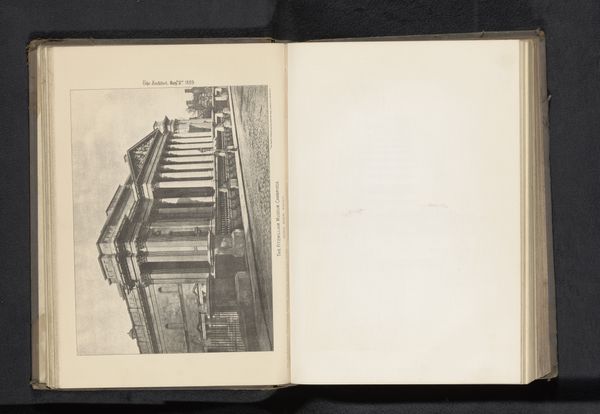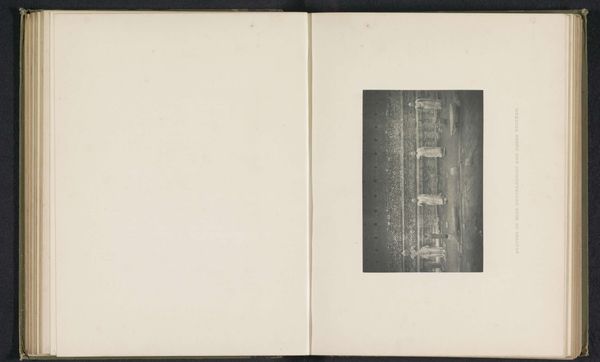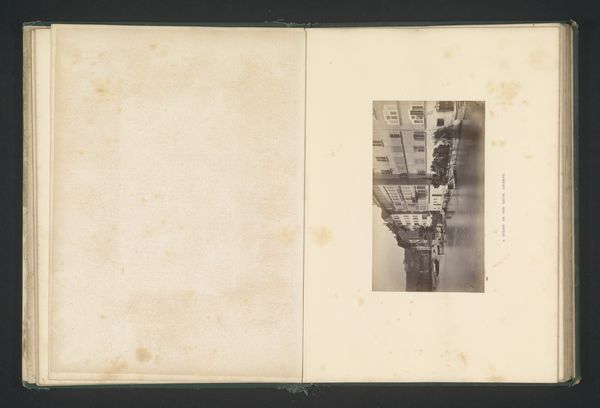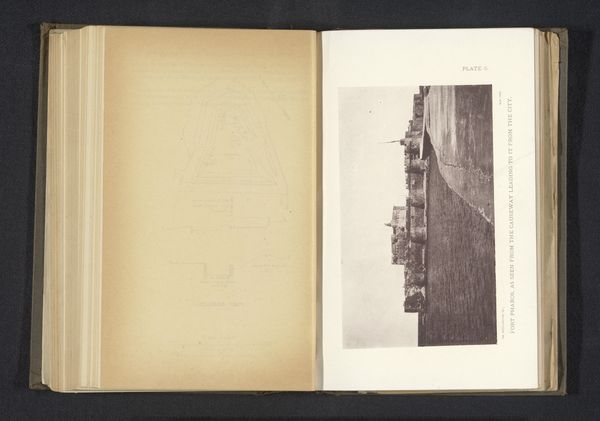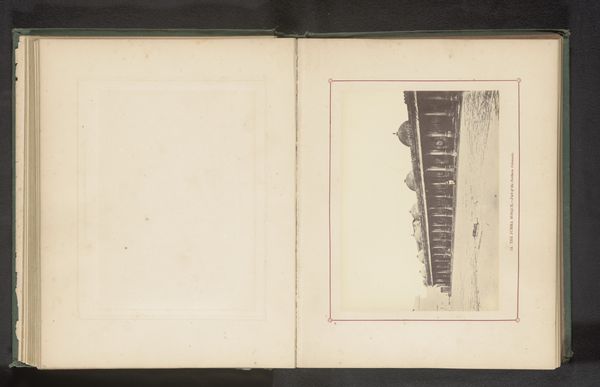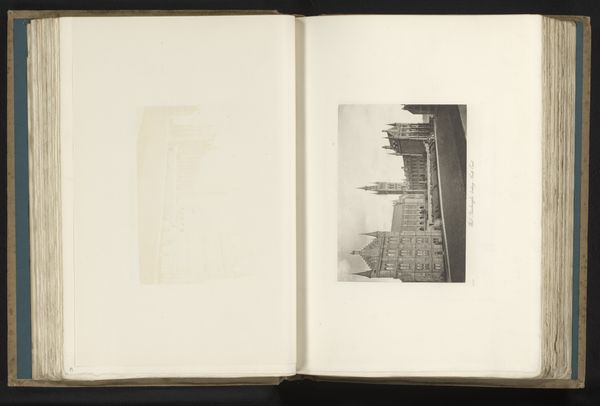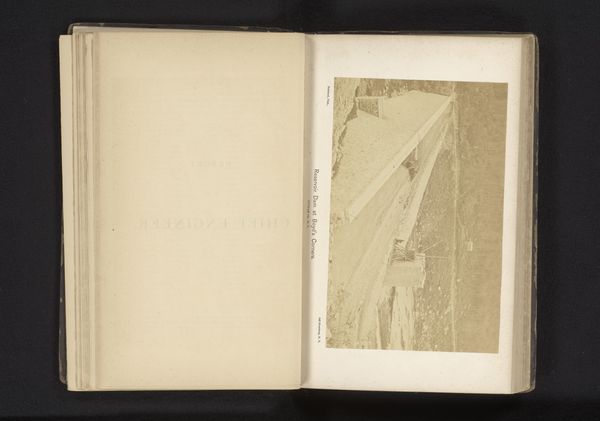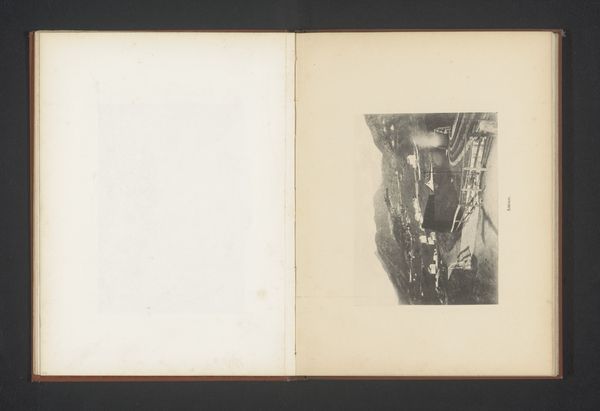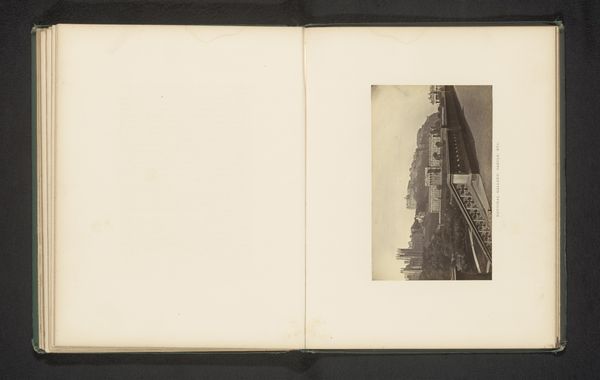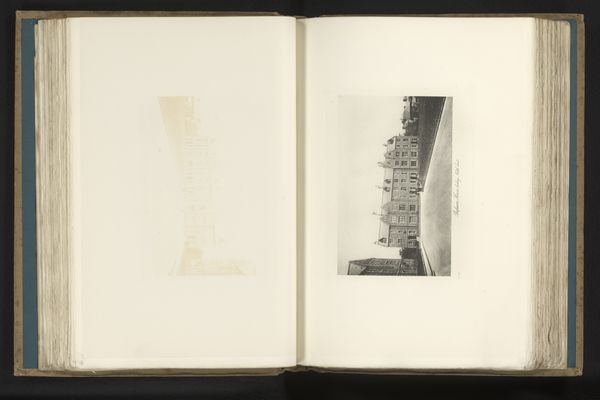
print, photography, gelatin-silver-print
#
paper non-digital material
#
ink paper printed
# print
#
photography
#
gelatin-silver-print
#
cityscape
#
building
Dimensions: height 184 mm, width 243 mm
Copyright: Rijks Museum: Open Domain
Curator: Before us, we have an image titled "Gezicht op het St. Luke's Hospital te Londen," that is, "View of St. Luke's Hospital in London," dating from before 1889. It is presented as a gelatin-silver print, likely taken from a publication of the time. Editor: Right, and it immediately strikes me as melancholic. The low angle, the grey tones… it's a real urban dirge. You feel the weight of that institution. Curator: Indeed. St. Luke's, of course, holds significance. Originally established in 1751 as a hospital for the mentally ill, its history is interwoven with the evolving understanding—and often, misunderstanding—of mental health treatment in the 19th century. Considering its place as a public institution, one could explore how this image constructs or reflects public perceptions and experiences. Editor: That makes sense. You almost expect to see a tiny, Dickensian character peering out one of those windows. What about the medium itself? A gelatin-silver print…does that tell us something specific? Curator: Absolutely. Gelatin-silver prints, predominant from the late 19th century onward, offered sharper detail and a wider tonal range compared to earlier photographic processes. Their presence here signifies photography's growing role in documenting and disseminating information about architecture and urban spaces. This one especially. Editor: I think that really locks in a kind of detached, documentary feel. We’re seeing a space loaded with stories, viewed through a relatively cold and functional lens, historically. Even now, I struggle to look past that. I see an image not particularly invested in the people connected to this structure. What would they say about this portrayal of the St Luke’s facility today? Curator: Well, it’s critical that we unpack the silences inherent in images like these. Who is conspicuously absent? What perspectives are marginalized in favour of the image's ostensible objective neutrality? Exploring those questions can lead us towards a more profound understanding of the sociopolitical contexts and narrative structures informing the imagery. Editor: All worthy questions. Well, regardless, that's a very important thing to take away here. I still feel sad looking at it, though! Curator: As you say. By approaching the history of its setting and acknowledging historical frameworks and cultural implications, the image invites us to investigate both its construction of history and its resonance with modern sensibilities.
Comments
No comments
Be the first to comment and join the conversation on the ultimate creative platform.

